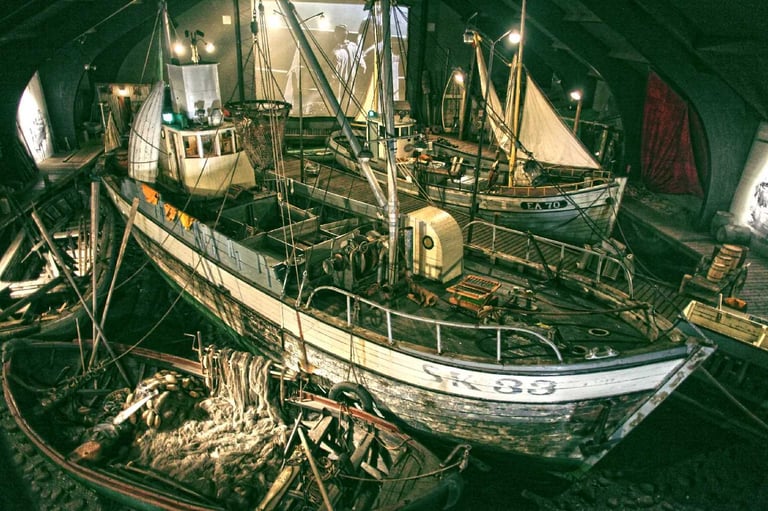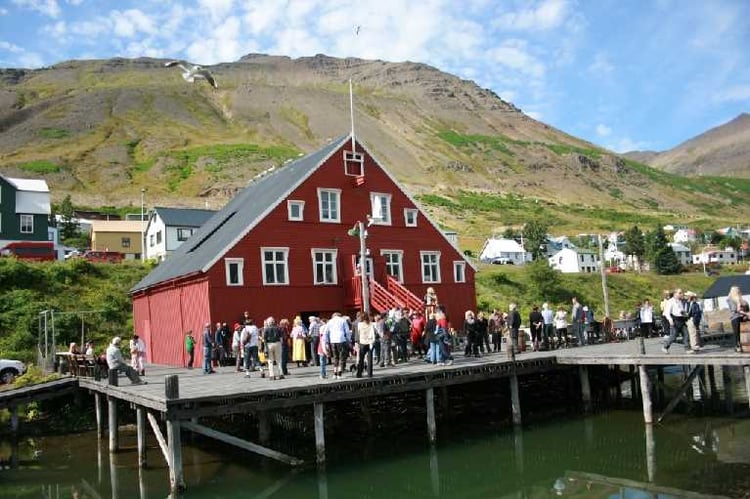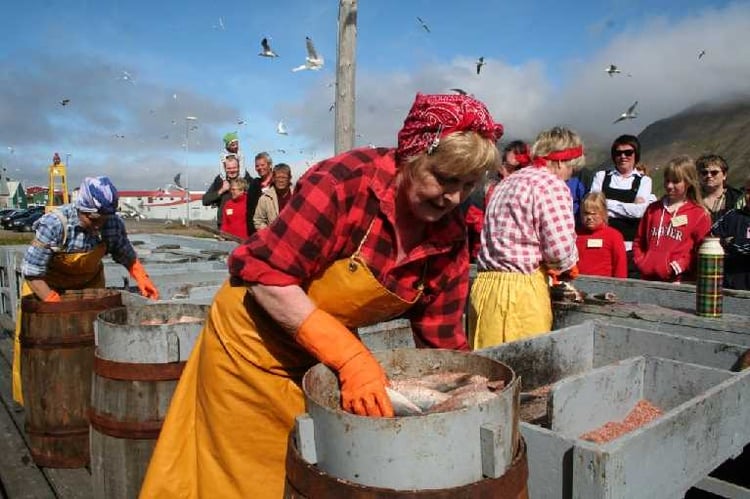Siglufjörður remembers its Golden Age
Siglufjörður is a small fishing town on the north coast of Iceland, about one and a half hour’s drive from Akureyri (which is sometimes called the Capital of North Iceland). Flanked by rugged mountains and blessed with a history that is quite literally rich, this town was once nicknamed the Klondike of Iceland – a reference to the famous gold producing region in Alaska. The gold in this case, however, was an abundance of ‘the silver of the sea’: herring, which gave the town its second nickname: the Herring Town. Siglufjördur today is a haven for hiking, sailing, fishing and skiing and winter activities. You’ll also find a nice swimming pool there and a 9 hole golf course.
The Golden Age of Herring
The golden age of herring lasted just over 100 years, from 1867 to 1968, and Icelanders generally refer to this era as the herring fairy-tale. The country was still an impoverished and essentially undeveloped Danish colony at this time, but the resulting economic boom helped to turn Iceland into a developed country – and ultimately give it its independence. Initially, the boom was mostly confined to several towns in the north of the country, but later it also moved to towns in the eastern fjords. At times, the export of herring accounted for up to 50% of the country’s total export income. Siglufjörður was at the forefront of this economic boom, and often the herring exports from this one town alone provided more than 20% of the total export income. As one would expect, given any kind of gold rush, the town itself grew rapidly, blossomed, and fostered a colourful culture that is still remembered and honoured today.
The Herr€ing Era Museum
Siglufjörður’s ambitious Herring Era Museum is the largest industrial and marine museum in Europe. It has five exhibition buildings, totalling 2500 square metres, and it is most likely the only one of its kind in the world. The town itself is a piece of history and the museum has essentially endeavoured to rebuild a part of the old town as it was during its heyday, complete with herring boats, a herring port, boatyard, and a factory. And in addition, it puts on live re-enactments. It won Iceland’s Museum Award in 2000, and the Micheletti Award in 2004 as the best new industrial museum in Europe.
The museum is open daily from June to September, and it just broke its attendance record this June, with 4,000 visitors in one month – thanks, in part, to big cruise ships that visited the fjord. Saturday admissions in July include a “Salting Show” at 3:00pm, where ‘Herring girls’ re-enact the gutting and packing of herring into barrels as it was done in old days. Traditional songs and dances are also performed and guests are invited to join in.
The Modern Fairy tale
The first weekend of August is a national holiday where Icelanders traditionally go camping. There are several festivals around the country where camping is combined with organized singing and dancing, and Siglufjörður is one of the hot-spots. The festival there actually begins on the 23rd of July with the launch of the Herring Fairy tale Festival, and then it peaks during the holiday weekend in August. There are, of course, Hotels and guesthouses available for those that love the idea of joining the festival but do not like the idea of camping.
Snorragata 10 | IS-580 Siglufjörður | Iceland | tel. +354 467 1604 | [email protected] | www.sild.is/en/






